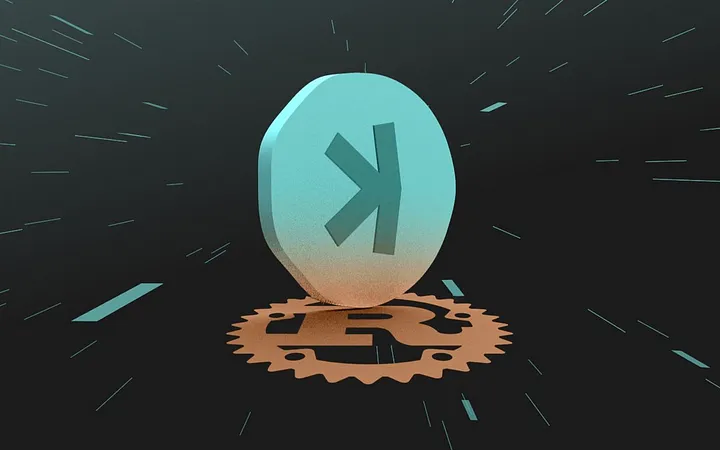Michael Sutton, one of the core developers on Kaspa took to Medium today to announce a major milestone with the official release of its first stable Rusty Kaspa (RK) node (version 0.14.1). This marks a significant shift for the network, paving the way for faster transaction processing, improved scalability, and a more robust foundation for future advancements.

The Dream Realized: Unleashing Performance with Rust
The vision behind the RK node project proposed two years ago, was to create a powerful and efficient engine for the Kaspa network. This vision has become a reality with the release of the stable version. A talented international team of developers maintains the new Rust-written codebase, which boasts exceptional quality.
Early Adoption Shows Promise
Even during its open beta phase, the RK node has significantly impacted the Kaspa network. Already, roughly a quarter of the network’s nodes are running the RK software, and nearly 30% of the network’s mining power is directed through them. This early adoption is a testament to the performance improvements users are experiencing with the new node.
Benefits for Network Participants
The transition to RK nodes offers several key advantages for those involved in the Kaspa network:
- Reduced Storage Footprint: Unlike the previous Golang nodes, which only pruned transaction data, RK nodes constantly prune headers as well. This translates to lower and more consistent disk usage for node operators.
- Blazing-Fast Sync Times: RK nodes leverage parallelism to significantly accelerate the processing of headers and blocks. This is particularly noticeable during initial block downloads (IBD), where RK nodes boast much faster speeds.
- Enhanced RPC Software Stack: The RPC interfaces have received an upgrade in design and will be further expanded in the near future. This includes the introduction of a fully-featured transaction index.
Transitioning to the New Era
The Kaspa development team is aiming for a smooth transition to the new node software. They have provided detailed instructions for various user groups:
- Existing RK Beta Participants: Upgrade to version 0.14.1 for improved stability and bug fixes.
- Golang Node Operators: Stagger the switch by picking a random number between 0 and 7 to choose a day for the upgrade. Be prepared to resync the new node from scratch as it uses a different database. Consider running both the Golang and RK nodes in parallel for a period of time to ensure stability.
- Golang Archive Node Operators: RK nodes support archival mode, but a complete migration process is not yet available. Continue running the Golang node for archival purposes until the migration tool is released.
- Mining Pools: Start experimenting with the RK node by allocating a small portion of your hashrate to it. Gradually increase this percentage until all mining operations are running through RK nodes. Coordinate with the Kaspa development team for timing and hashrate allocation.
- Exchanges and Transaction Confirmation Service Providers: Test the RK node in your test environments first. Since it implements the same gRPC API as the Golang node, it should function as a drop-in replacement. Gradually move your services to run on the RK node after ensuring familiarity and stability. Update your Kaspawallet Golang CLI wallets to version 0.12.17 for compatibility with RK nodes.
- Wallet Developers: Follow the simplified instructions outlined in KIP9 (Kaspa Improvement Proposal 9). Test your wallets extensively with the RK node. A detailed guide with a reference implementation for fully adapting wallets to KIP9 will be released soon.
- Normal Users: No action is required. However, some minor issues might arise with very small payments while wallet developers adapt to the new software.
A Glimpse into the Future
The RK codebase has already served as the foundation for the development of a rich software stack. Future announcements will delve deeper into these exciting projects, including:
- Kasp NG (KNG): This feature-rich desktop application integrates the RK P2P node and connects to the public P2P network infrastructure. With KNG, even novice users can contribute to the network’s decentralization by running a local node.
- WASM SDK: The WASM SDK enables developers to integrate the RK framework into web browsers, Node.js environments, and Chrome extensions. This opens up numerous possibilities for innovative applications built upon the Kaspa network.
The release of the stable RK node marks a significant milestone for the Kaspa network. With its enhanced performance and scalability, the network is well-positioned for continued growth and innovation in the years to come. The Kaspa development team deserves significant credit for their dedication and expertise in bringing this project to fruition.
You can read the full article Kaspa On Rust by clicking here
